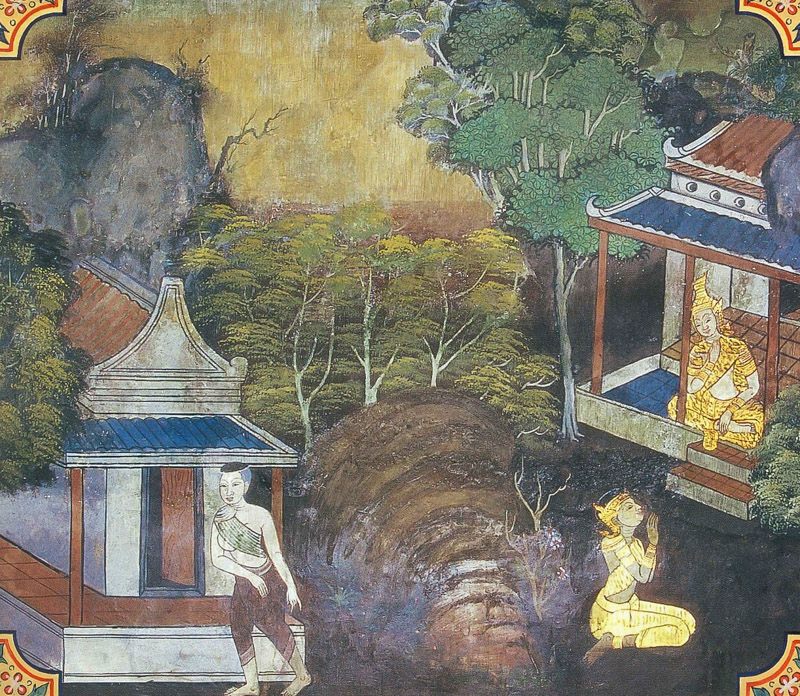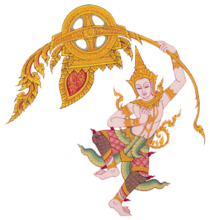
The Bodhisatta was once an ascetic. Before this, he was a wealthy brahmin, but after his wife died, he took his young son to live an austere religious life deep in the Himalayas. Many years later, some bandits from the border region raided a town to take plunder and slaves. One beautiful but wicked woman fled their attack, and during her journey she came upon the Bodhisatta’s hut. He was away gathering food, but his son was at home and the woman wanted him as a husband. She knew that virtue was protected in the forest, but if she could get him to come live with her in civilization, she could corrupt him and get him under her power. So the woman convinced the son that if he could resist temptation in a town, he would rise to a far nobler life than if he did so living in the forest. He agreed to go with her, but needed to say goodbye to his father first. The woman knew that if she was still there when the Bodhisatta returned, he would kill her, so she left right away, leaving a trail for the son to follow later. The rest of the day he sat meditating.
When the Bodhisatta returned, he immediately realized his son had fallen under the power of a woman because he did not come out to greet him and had not done his duties. He told his father he was going to test his virtue in the world of men, where his practice would be more fruitful. But having come to the Himalayas as a child, he did not know what life was like there, and he asked his father which group of people he should befriend. As a way of warning his son what life was like outside the forest, the Bodhisatta answered that he should find people who are reliable, trustworthy, and patient and avoid anyone who is foolish and impulsive. The son knew it would be very difficult to find people like this, so he decided not to leave. The Bodhisatta then taught his son mystic meditation, and they both stayed in the wilderness for the rest of their lives.
In the Lifetime of the Buddha
The wicked woman who tempted the Bodhisatta’s son was an earlier birth of a plump, lascivious young woman who had no suitors for marriage. Her mother decided to entice one of the Buddha’s disciples into falling for her. That morning, as she offered alms to the disciples walking past her house, the mother looked for one who could be tempted by a craving for good food. Eventually she saw a disciple who had not given up concern with his appearance: the corners of his eyes were anointed with oil, some hair hung down, his robes were of fine fabric and immaculately clean, and his bowl was colored like a precious gem. The mother knew she could corrupt him, so when he came to the door she took his bowl and invited him into the house to eat the best food she could provide. When he finished eating, she told him to come by again anytime. He took up her offer and they got to know each other well.
When she thought it was the right time, the mother took the next step in her plan by telling the disciple that theirs was a happy household, but she had no son or son-in-law to maintain it. The next time the disciple came, she had her daughter adorn herself and begin seducing him with womanly tricks and wiles—and it worked. He fell under her power and wanted to leave the sangha. The Buddha told him this story so he knew that this same woman had harmed him and tried to lure him away from a spiritual life in an earlier birth, when he was the young ascetic living in the Himalayas.
